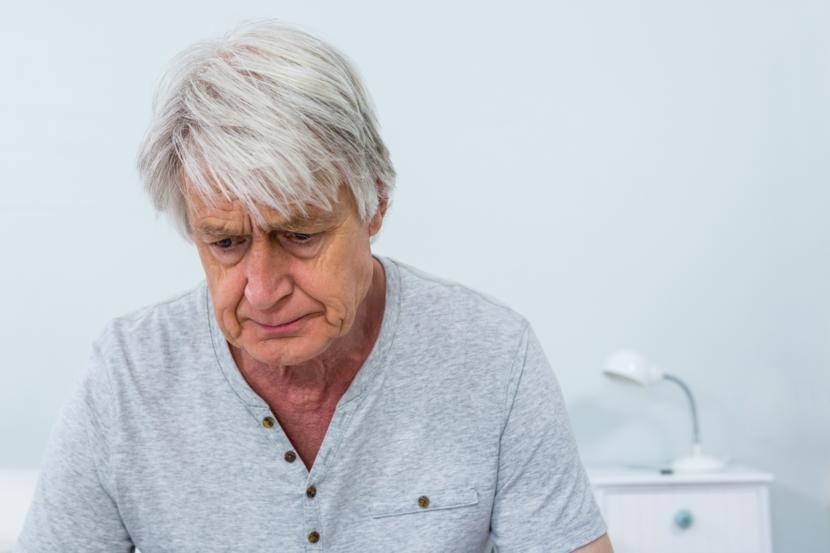The History of Parkinson's Disease

You've probably heard of Parkinson's disease, with it affecting millions of people around the world, mostly those who are older. But do you know how it came to be? This disorder has a vast and interesting history as to how it came to be. It's essential to learn the history of Parkinson's to get a deep understanding of how doctors and researchers have found out about this disease, as it can help you get a grasp on how you can help yourself or your own loved one who has it. So, let's go over the history of Parkinson's disease as well as a brief overview of it.
What is Parkinson's disease?
Parkinson's disease is a progressive disorder that affects the nervous system, affecting how the affected person would move or act. The symptoms may develop slowly and start off as slight tremors in certain body parts, particularly the hand. They might also experience a host of other symptoms that affect their body and muscles, becoming weaker as the disorder progresses. There are about one million adults in the USA alone who have Parkinson's disease, with more than 60,000 people diagnosed every year. The figure might be even higher as there are individuals who live with the disease undiagnosed. In the UK, less than 130,000 people have the disease, which is 1 in every 500 people. Around the world, 10 million live with Parkinson's disease, with males having a higher risk than females. It would usually happen to those who are over 50 years old, although 5 percent of the cases are those who are younger than 40 years old.
History of Parkinson's Disease
Parkinson's disease has been known since the ancient times, referred as Kampavata in the ancient Indian medical system (Ayurveda). In Western medical literature, it was called as "shaking palsy" by Galen, a physician back in AD 175. It was also part mentioned in an Egyptian papyrus. The writings have described symptoms similar to the disease.
After Galen, there had been no reference to the disease until the 17th and 18th centuries, where several authors wrote about the condition. It was only in 1817 that a London doctor named James Parkinson wrote a detailed medical essay on it, entitled "An Essay on the Shaking Palsy." After this essay, it was then known as a medical condition, with neurologists adding more information on the disease.
In 1877, French neurologist Jean-Martin Charcot began to study the disease, truly recognizing Parkinson's work. It was the landmark in understanding the disease, and the neurologist named the disease after the original author. As the years passed, the only treatments were anticholinergics or surgery. There were many types of research and studies on the disease, although there were still a lot of mystery to it. While dopamine deficiency was the apparent cause, the occurrence as to why it happens is still unclear.
In the 1960s, researchers had identified the chemical differences in the brains of those who suffered from the disease. It was then that they began to create the first medical treatment, which is the drug named levodopa. This medication was synthesized in 1911, although it only began gaining attention during this time. And ever since then, it was the "gold standard" in medicating patients with Parkinson's disease.
During the 1980s, Alim-Louis Benabid and his other colleagues from Grenoble, France, had created a deep brain stimulation, or a form of surgery that can help treat the symptoms of Parkinson's disease. Since then, research has been rapidly progressing. Although there is no cure yet, there are now medications and treatments discovered that can help effectively control the symptoms and lessen its severity.
Foundations have been established, and many known people have started to help raise awareness and encourage funding for studies, with The Michael J. Fox Foundation raising almost 100 million dollars. Today, while there is still no cure for the disease yet, many foundations and non-profit organizations drive in funding for research and studies, also making sure that those who suffer from the disease are not alone and get the proper treatment they need.
Causes and Symptoms
Parkinson's disease happens when an area of the brain is either impaired or deteriorating. The area is called the substantia nigra, which produces a chemical called dopamine that is essential in communicating with your body for smooth and balanced muscle movement. Without the production of dopamine, your brain won't be able to properly function with your body, resulting in the disability to control your actions, as well as abnormal nerve functioning. There is no exact reason why the impairment begins, although it can be inherited from families who have also suffered from the disease. Certain toxins around your environment, or even internal toxins, can also be a factor, as they can destroy the dopaminergic neurons that cause the disease to happen. Exposure to manganese, carbon disulfide, carbon monoxide, or even pesticides may cause it. Oxidative stress and lack of antioxidants in the body can also cause it.
As for its symptoms, you may suffer from the following:
- Tremor or shaking
- Slow movement
- Stiff muscles
- Impaired balance or posture
- Inability to move automatically, such as smiling or blinking
- Change of speech or writing
- Rapid eye movement
- Depression
- Thinking slowly
There are also other symptoms that include the way you move, write, or speak. If you suffer from any of these symptoms, then it's best to call a doctor to diagnose it early and give the proper treatment to avoid the symptoms from progressing.
How to Prevent and Treat Parkinson's
Unfortunately, Parkinson's disease has no cure. But you'll be able to treat it with proper medication and other lifestyle changes. Some drugs help manage your problems with movement and walking. These types of medications would substitute or increase dopamine. Antidepressants can help ease the depression and antipsychotic medicinal products for those who have dementia with their disease. Sometimes, surgical procedures are recommended, although they have their risks and won't heal you from the disease or its progression, to relieve the symptoms.
As for home remedies, you will need to have a balanced diet and exercise, usually with a physical therapist to help you learn how to avoid falls and do your daily activities. Other types of alternative medicine include yoga, meditation, pet or art therapy, or even massages and acupuncture. There are still no proven ways to prevent the disease, although studies show that caffeine can help reduce the risk of Parkinson's disease, particularly green tea. Regular aerobic exercises can also make a significant reduction in the risk as well.
In Conclusion
If you want to start helping people who have Parkinson's disease, then you must understand its history and how it works, so you'll be able to have a grasp on what you or your loved ones feel like and what you can do to help them ease their symptoms. Plus, it doesn't hurt to know more and raise awareness of this disease.















